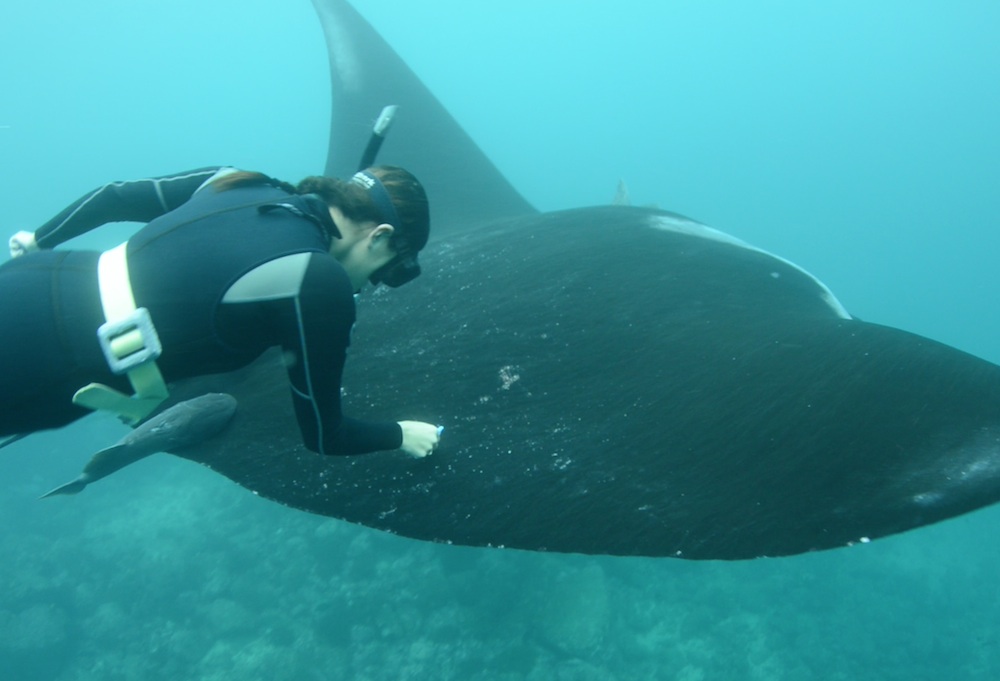Press Release from the Marine Megafauna Foundation
DNA-based population studies help to understand population structure, connectivity and population sizes. Apart from land-based sampling at fish-landing sites, manta-ray tissue samples are typically collected underwater while on scuba gear or while free diving, using hand spears with punch tips. But this technique may be discouraged in some areas where manta rays are an attraction for tourists, due to the perceived fear that the sampling activity may harm the rays or change their behavior, thereby impacting the tourists’ manta-ray encounter.
MMF researchers explored alternative methods to obtain DNA by collecting body surface mucus from wild manta rays using a toothbrush. The advantages of this method include a reduction in sampling equipment, a significantly reduced impact on the manta ray and acceptance of a non-invasive sampling protocol by tourists in vibrant tourism areas.

This important new study in PeerJ demonstrates that DNA from manta-ray mucus collected with this method can reliably be used in PCR-based population genetic studies. This study is the first example involving underwater collection of mucus by scuba divers and was shown to be an effective, low-cost alternative to traditional sampling techniques. While this study was conducted on manta rays, it was the first to test the feasibility of this sampling method in the wild and the usefulness of mucus to genetic studies in elasmobranchs, creating new opportunities to apply this technique to other species within this group of threatened marine species.
Says Dr. Andrea Marshall, Principal Scientist, Global Manta Ray Program, Marine Megafauna Foundation, “While field research is critical to capturing information on wild populations, it is important to continuously develop methodologies that will be less invasive or potentially harmful for the animals we are working to protect.”

